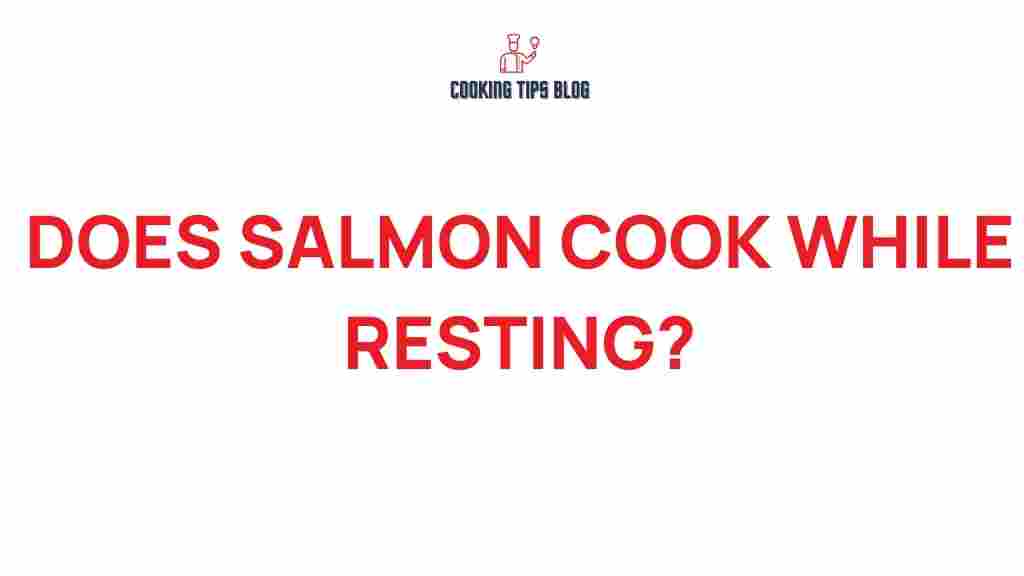Does Salmon Really Continue to Cook While Resting?
When it comes to cooking fish, especially salmon, many home cooks and culinary enthusiasts often wonder about the best practices for achieving perfectly cooked fillets. One common question that arises is whether salmon continues to cook while it rests after being removed from heat. In this article, we will explore the science behind cooking salmon, the resting process, and what it means for your culinary creations. So, let’s dive in and discover the truth!
Understanding Salmon Cooking Basics
Salmon is a popular choice among seafood lovers due to its rich flavor and numerous health benefits. However, cooking salmon can be tricky. Here are some key points to keep in mind:
- Cooking Methods: Salmon can be prepared in various ways, including grilling, baking, poaching, and pan-searing.
- Doneness: The ideal internal temperature for cooked salmon is around 125°F (52°C) for medium-rare and 145°F (63°C) for well-done.
- Texture: Properly cooked salmon should be flaky and moist, not dry or rubbery.
What Happens When Salmon Rests?
After cooking, salmon, like other meats, should be allowed to rest for a few minutes. This resting period is crucial for several reasons:
- Juice Redistribution: Resting allows the juices to redistribute evenly throughout the fish, ensuring a moist and flavorful bite.
- Temperature Stabilization: The internal temperature of the salmon will stabilize during this time, which can affect the overall doneness.
- Carryover Cooking: This is where the concept of salmon continuing to cook comes into play.
Does Salmon Really Continue to Cook While Resting?
Yes, salmon does continue to cook while it rests, a phenomenon known as carryover cooking. This occurs because the residual heat within the fish continues to raise its internal temperature even after it has been removed from the heat source.
Understanding Carryover Cooking
Carryover cooking is a term used to describe the residual heat that remains in cooked foods after they are taken off the heat source. This process can raise the temperature of salmon by about 5°F to 10°F (2°C to 5°C) during the resting period. Here’s a closer look at how it works:
- Heat Retention: Salmon is a fatty fish, which means it retains heat well. The fat helps maintain the temperature longer than leaner types of fish.
- Internal Heat Distribution: As the outer layers of salmon cool, the heat from the center of the fish moves outward, causing the overall temperature to rise.
- Cooking Time: The thickness of the salmon fillet also influences how much it continues to cook. Thicker cuts may experience more carryover cooking than thinner ones.
How to Perfectly Cook Salmon
To ensure your salmon turns out perfectly every time, follow these step-by-step instructions:
- Select Your Salmon: Choose fresh, high-quality salmon fillets. Look for vibrant colors and a fresh smell.
- Preheat Your Cooking Surface: Whether you’re grilling or baking, preheat your grill or oven to the desired temperature.
- Season the Salmon: Use a simple seasoning of salt, pepper, and your favorite herbs or marinades to enhance the flavor.
- Cook the Salmon: Cook salmon for about 4-6 minutes per side, depending on the thickness of the fillet. Aim for an internal temperature of 125°F (52°C).
- Remove from Heat: Once your salmon reaches the desired doneness, remove it from the heat source.
- Let It Rest: Allow the salmon to rest for 5-10 minutes. This is when carryover cooking occurs.
- Serve and Enjoy: After resting, serve your salmon with your favorite sides and enjoy!
Troubleshooting Common Salmon Cooking Issues
Even the best chefs can encounter challenges when cooking salmon. Here are some common issues and solutions:
- Problem: Salmon is dry or overcooked.
- Solution: Use a meat thermometer to check the internal temperature and remove the salmon from heat at around 125°F (52°C) for medium-rare.
- Problem: Salmon is undercooked.
- Solution: If you notice that the center is still translucent, return it to the heat for an additional minute or two, then check again.
- Problem: Uneven cooking.
- Solution: Ensure that the salmon fillet is of even thickness. If cooking multiple pieces, try to use fillets that are similar in size.
Tips for Cooking Salmon Perfectly Every Time
To enhance your salmon cooking skills further, consider the following tips:
- Use Skin-On Fillets: Cooking salmon with the skin on helps to retain moisture and adds flavor.
- Marinate for Flavor: Marinating salmon can enhance its flavor and tenderness.
- Experiment with Cooking Methods: Each cooking method brings out different flavors and textures in salmon. Try grilling, poaching, or baking to see what you prefer.
- Monitor Cooking Time: Cooking times vary based on thickness and cooking method. Always check for doneness.
Conclusion
In conclusion, salmon does indeed continue to cook while resting, thanks to the process of carryover cooking. By understanding this phenomenon and following the right techniques, you can achieve perfectly cooked salmon every time. Remember to allow your salmon to rest after cooking to maximize flavor and texture.
For more tips on cooking salmon and other seafood, check out this comprehensive seafood cooking guide. Happy cooking!
For additional resources and recipes, feel free to explore this salmon recipe collection for inspiration. Enjoy your culinary adventures with salmon!
This article is in the category Tools and created by Cookingtipsblog Team
